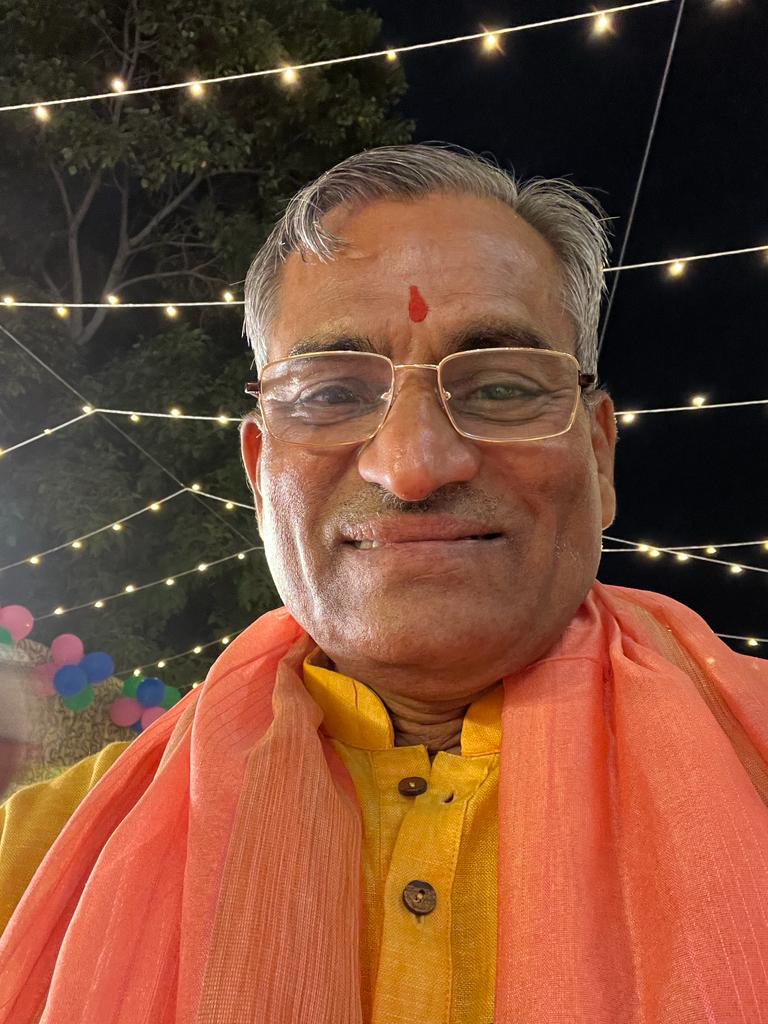news details |
|
|
| India: A nation moving forward with self-confidence | | |  Prof. Mahesh Chand Gupta Prof. Mahesh Chand Gupta
The ‘Operation Sindoor’ which India has recently successfully carried out, has become not just a military operation but a symbol of its strategic thinking, global outlook and the collective strength of the nation. The success of this operation has given India a chance to prove once again that it is not just a country with a large population or ancient culture but is also a strategic, technical and military power that is capable of influencing global equations. India is now a nation moving forward with self-confidence.
India’s growing power and global identity is a matter of pride for the countrymen. Operation Sindoor has once again strongly presented India’s defense capability to the world. The message is clear that India uses its power only when required but when it does, it does so with complete precision and success. After this operation, the eyes of the international community are fixed on India. Global power centres like the US and China have now started realising that India is not just an emerging economy but a potential leader nation which is moving ahead with the principle of ‘Vasudhaiva Kutumbakam’.
India’s thinking is not only to match the US or China but to surpass them and establish itself as a world leader. The most interesting thing about Operation Sindoor was that it also brought a new consciousness in Indian politics. Leaders like Owaisi and Shashi Tharoor, who were earlier considered anti-government, also praised this operation and considered national interest paramount. The way these leaders, as members of the Indian delegation, went to different countries of the world and strongly presented India’s side and exposed Pakistan, it became clear that when it comes to the security and prestige of the country, political differences are left behind and the feeling of ‘India first’ becomes paramount.
This is the same form of nationalism which has been deepening in the Indian psyche for the last decade under the leadership of Prime Minister Narendra Modi. The wave of nation-building that began in 2014 is now yielding visible results.
India’s rapidly growing economy has made it a hub of global investment and technological partnerships. With the success of Operation Sindoor, India has also made major achievements on the technological front.
The world’s tallest Chenab Railway Bridge over the Chenab River in Kashmir is not just a construction project but an astonishing example of engineering prowess and scientific approach. Prime Minister Narendra Modi has made a long-cherished dream come true by flagging off the first Vande Bharat train to Srinagar along the Chenab Bridge. With this, Kashmir has been connected to the rest of the country. Now direct train travel from Kashmir to Kanyakumari will be possible. This was the dream of Maharaja Pratap Singh, the Dogra king of Jammu and Kashmir, who conceived the route in the late 1880s and engaged British engineers to survey it. For the people of Kashmir Valley, this train has not only become a reliable means of transportation in all seasons, but it is also expected to boost tourism and trade in the area. Earlier in April, Modi inaugurated India’s first vertical lift Pamban Sea Bridge in Rameswaram, Tamil Nadu. This railway bridge built over the sea connects the past and the future.
Now the main structure of Rafale fighter aircraft will be manufactured in Hyderabad in India, which is a historic achievement of the ‘Make in India’ initiative. For this, the agreement between Tata Advanced Systems Limited and France’s Dassault Aviation shows that now India is not only an importer but is also becoming a manufacturer and exporter of defense products. India is now not only a consumer of weapons, but also a manufacturer and exporter. The participation of private companies in the defense sector is making India self-reliant. India’s future in defense production is very bright.
Self-reliance in the field of defense is a big achievement of India. India has made a big change by adopting the policy of allowing the private sector to enter the defense sector. This has promoted competition, innovation and quality. The demand for the Brahmos missile developed by a joint effort of India and Russia after Operation Sindoor has increased in the world market and many countries are now showing interest in buying defense equipment from India.
It is expected that India will leave behind the global competition in the defense sector in the next ten years. Not only this, India is moving towards making its defense sector completely self-reliant through indigenous technology and startups.
India has made remarkable progress not only in defense but also in the fields of energy, health and technology. India is becoming a world leader in the field of solar energy. With the coordination of government schemes and private investment, India is now on the path of becoming an energy exporting country.
Now semiconductor manufacturing has started in India. It is the most important part of the global supply chain. Now this will also give India self-reliance in areas like electronics manufacturing and artificial intelligence.
India’s foreign policy is no longer limited to its own interests but is focused on the policy of taking the world along. Prime Minister Modi has a clear vision that India wants to play the role of a guide and not just a partner in global leadership. Presidency of G20, India’s active participation in global forums, the changed scenario after Operation Sindoor are indications that India is now emerging as a balancing power.
Although India’s progress is remarkable, the challenges are also not less. Battling all the challenges, India is determined to move forward. India’s policy of holistic development and holistic revolution is now clear.
The dream of making India a developed nation by 2047 is not just a political manifesto but a national goal. For this, cooperation of policy, intention and citizens is necessary and these three are united and taking India forward today.
Operation Sindoor has shown India’s military capability as well as given a message that India is no longer hesitant about its interests. It wants peace, but is capable of responding to any interference or challenge. India is now at a point from where it is not only solving its problems but is also participating in solving global problems. This is the new India, which is self-reliant, powerful, technologically advanced, and ready to keep pace with the world. This is a glimpse of that new India which is full of self-confidence, unity, innovation and the spirit of leadership.
(The author is a renowned educationist, speaker and thinker. He is also the coordinator of Delhi University Foundation.) |
|
|
|
|
|
|
|
|
|
|
|
|
| |
| |
|
|
|
|
 |
|
|
